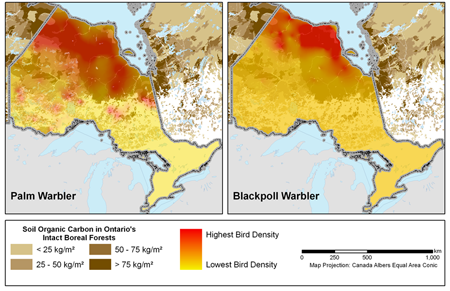We spent Thanksgiving in Florida visiting family and, as I am every time I visit there in fall or winter, I was astonished by the abundance of a Boreal dependent bird, the Palm Warbler. Not only could you find clouds of Palm Warblers in just about every piece of natural habitat at least in north-central Florida, but there were even Palm Warblers hopping around parking lots of department stores and suburban neighborhoods.

Palm Warbler
Credit: Jeff Nadler
As the name implies, the Palm Warbler is named for where it winters, as in many of the remaining natural habitats where it winters you are likely to find palms. In summer the 20 million Palm Warblers estimated to exist on earth are spread out across the Boreal Forest of Canada from the Northwest Territories to Newfoundland. Over 98% of the species population breeds in Canada's Boreal.
Palm Warblers reach their highest nesting densities in peatlands including in what may be the world's largest peatland complex in northern Ontario and Manitoba. This area is also one of the world's largest reservoirs of stored carbon and the overlap of this carbon and the high concentrations of Palm Warblers was a feature we highlighted in our recently-released report "The Carbon the World Forgot." Ontario's Boreal encompasses roughly 15% of the breeding range of the world's Palm Warblers and about 49 billion tonnes of carbon. This is just one example of how protecting these carbon banks would protect biodiversity. Likewise protecting Quebec's 31 billion tonnes of Boreal carbon would overlap with perhaps 20% of all Palm Warblers and Manitoba's 19 billion tonnes of carbon lies underneath the nesting grounds of nearly 10% of the world's Palm Warblers.

Overlay of warbler breeding density and carbon density
Credit: Global Forest Watch Canada
Here's a video I shot Thanksgiving week of the eastern subspecies of a Palm Warbler in a small state park in central Florida:

